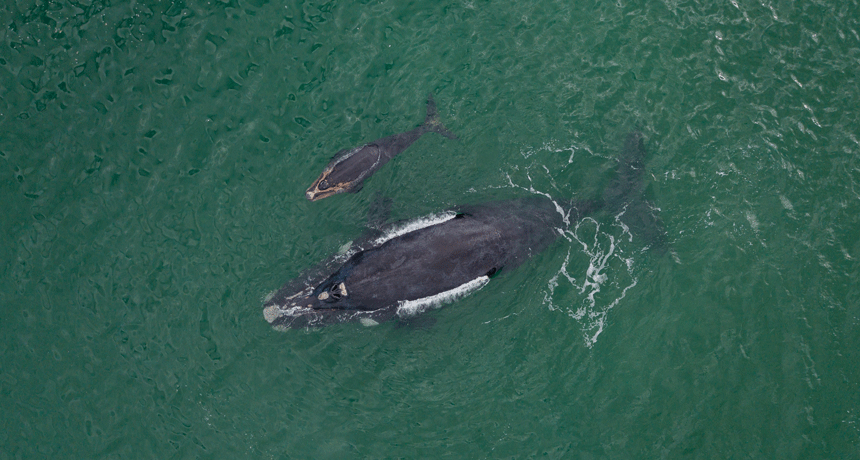audible Something that can be heard, usually with ears or other sound-sensing structures.
audio Having to do with sound.
biology The study of living things. The scientists who study them are known as biologists.
calf (plural: calves) The name of young animals in a range of mammalian species, from cattle to walruses.
dolphins A highly intelligent group of marine mammals that belong to the toothed-whale family. Members of this group include orcas (killer whales), pilot whales and bottlenose dolphins.
journal (in science) A publication in which scientists share their research findings with experts (and sometimes even the public). Some journals publish papers from all fields of science, technology, engineering and math, while others are specific to a single subject. The best journals are peer-reviewed: They send all submitted articles to outside experts to be read and critiqued. The goal, here, is to prevent the publication of mistakes, fraud or sloppy work.
killer whale A dolphin species (Orcinus orca) whose name means whale killer. These animals belong to the order of marine mammals known as Cetacea (or cetaceans).
orca The largest species of dolphin. The name of this black-and-white marine mammal, Orcinus orca, means killer whale.
predator (adjective: predatory) A creature that preys on other animals for most or all of its food.
prey (n.) Animal species eaten by others. (v.) To attack and eat another species.
range The full extent or distribution of something. For instance, a plant or animal’s range is the area over which it naturally exists. (in math or for measurements) The extent to which variation in values is possible. Also, the distance within which something can be reached or perceived.
repertoire A stock of regularly performed songs
sensor A device that picks up information on physical or chemical conditions — such as temperature, barometric pressure, salinity, humidity, pH, light intensity or radiation — and stores or broadcasts that information. Scientists and engineers often rely on sensors to inform them of conditions that may change over time or that exist far from where a researcher can measure them directly. steer A castrated male bovine raised for meat.
tone Changes in a voice that express a particular feeling or mood.
wave A disturbance or variation that travels through space and matter in a regular, oscillating fashion.
whale A common, but fairly imprecise, term for a class of large mammals that lives in the ocean. This group includes dolphins and porpoises.








